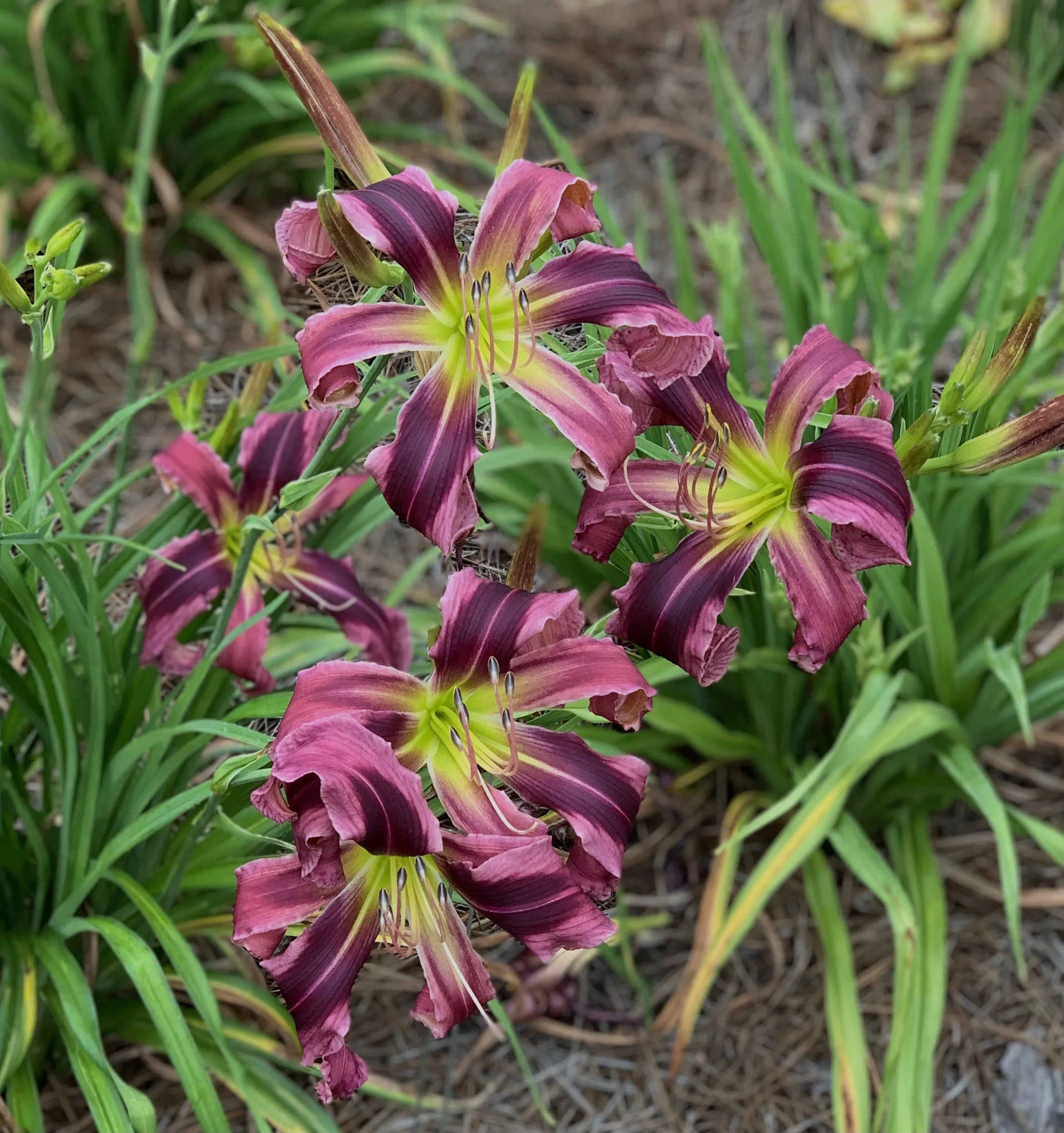Purple Bloom Tarantula Care What is a Purple Bloom?
The Purple Bloom Tarantula, scientifically known as Pamphobeteus sp. platyomma, is a captivating and sought-after species in the tarantula-keeping hobby. Known for its striking coloration, particularly the vibrant purple hues that often appear on its legs and carapace, this tarantula originates from South America. Its beauty makes it a favorite among experienced keepers. Understanding its unique needs is crucial for providing a healthy and enriching environment, ensuring it thrives in captivity. This guide dives into the essential aspects of Purple Bloom Tarantula care, offering insights and tips to help you become a successful keeper. From enclosure setup to feeding and breeding, we’ll cover everything you need to know to care for these beautiful creatures.
Origin and Habitat
Purple Bloom Tarantulas are native to the rainforests of South America, primarily found in countries like Colombia and Ecuador. Their natural habitat is characterized by high humidity, dense vegetation, and a warm climate. These tarantulas are terrestrial, meaning they live on the ground, often burrowing under leaf litter, logs, and in the soil to create their burrows. Mimicking their natural environment is vital for their well-being in captivity. Understanding their origin allows you to replicate their preferred living conditions, ensuring they feel secure and content.
Characteristics and Appearance
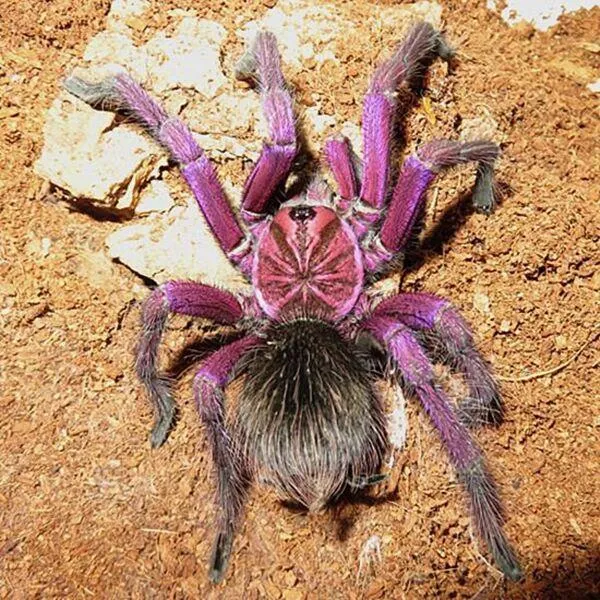
The most distinctive feature of the Purple Bloom Tarantula is, of course, its stunning coloration. Adults often display vibrant purple or reddish hues on their legs, carapace, and sometimes even the abdomen. This coloration intensifies with age and is especially pronounced in mature females. They are considered a large species, with females reaching a leg span of up to 8 inches. Males tend to be smaller and may have less intense coloration. The combination of their size, vivid colors, and unique patterns makes them a visually appealing addition to any collection.
Purple Bloom Tarantula Care Top 7 Tips
Caring for a Purple Bloom Tarantula requires attention to several key factors. These tips will help ensure your tarantula lives a long and healthy life. The following section will provide a detailed guide to keep your tarantula healthy and happy.
Enclosure Setup
The right enclosure is fundamental for your Purple Bloom Tarantula’s well-being. A well-designed habitat replicates its natural environment and offers security and comfort. Considerations for enclosure size, substrate, humidity, and temperature are essential for their survival. An appropriate enclosure provides a place to burrow and feel safe. It’s also a space where you can observe them. Always prioritize safety and create a space that suits their natural behaviors.
Size and Type of Enclosure
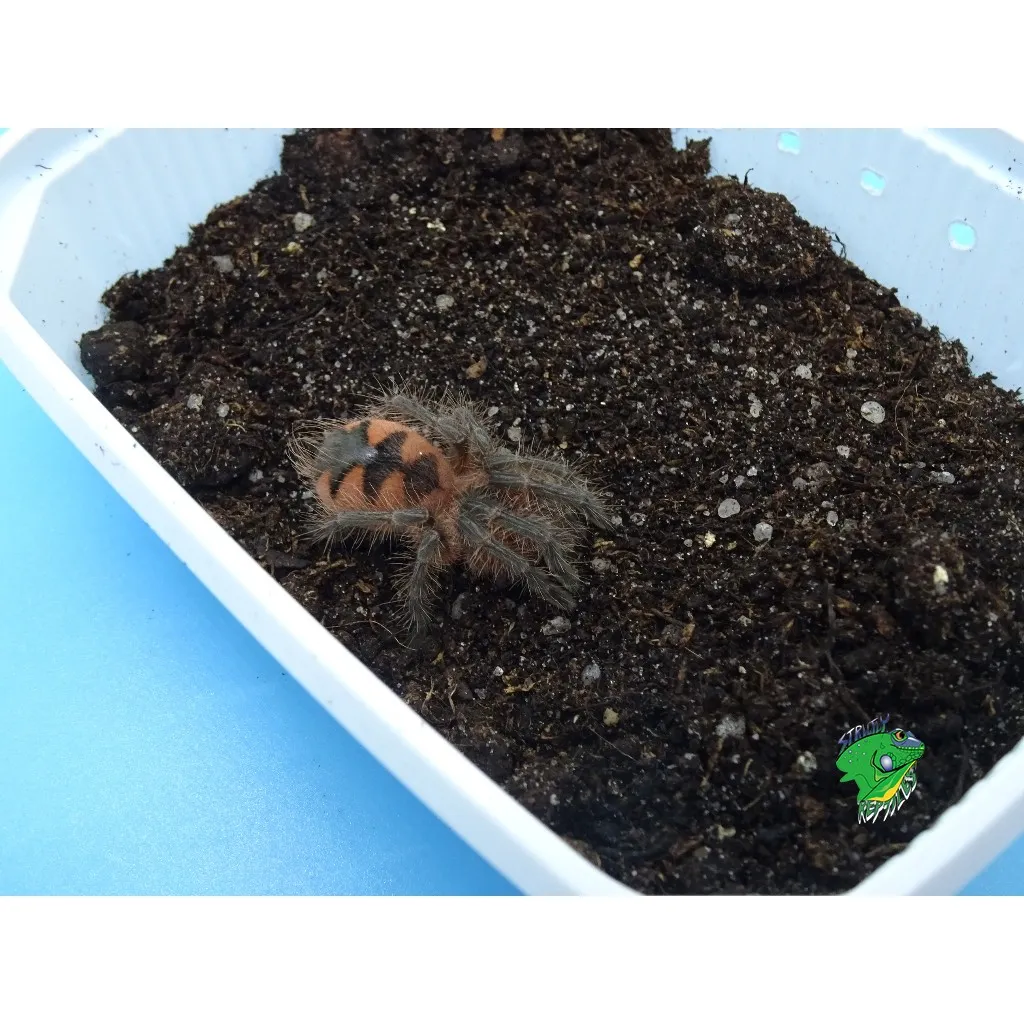
A suitable enclosure should be large enough to accommodate the tarantula’s full leg span, allowing for movement and burrowing. A glass terrarium or a plastic enclosure is a great choice. As a general guideline, an adult Purple Bloom should have an enclosure that is at least 18x18x12 inches. Ensure the enclosure has a secure lid to prevent escape. Proper ventilation is important, but it should not compromise humidity levels.
Substrate
The substrate is the bottom layer of the enclosure, and it provides a place for the tarantula to burrow. A mix of coco fiber, peat moss, and a small amount of vermiculite is often a good choice. The substrate should be at least 4-6 inches deep to allow for burrowing. Keep the substrate slightly moist, but not saturated, to maintain appropriate humidity levels. Avoid substrates that can mold or harbor pests.
Humidity and Ventilation
Purple Bloom Tarantulas thrive in a humid environment, typically between 70-80%. You can achieve this by misting the enclosure once or twice a week, depending on the humidity levels in your home. Proper ventilation is also crucial to prevent mold and maintain air quality. Ensure the enclosure has some cross-ventilation, such as small holes in the lid or side of the enclosure. Monitoring the humidity with a hygrometer is recommended. Poor ventilation can lead to respiratory problems.
Temperature
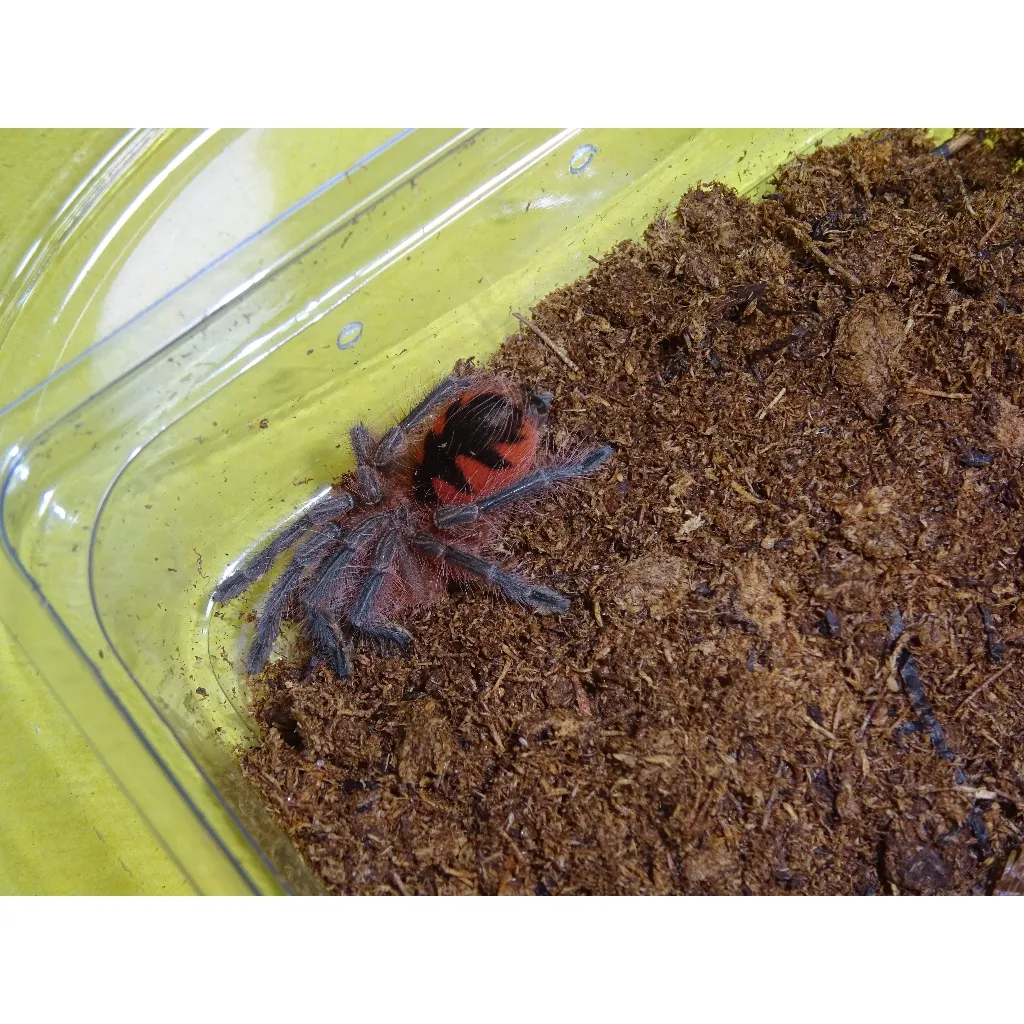
The ideal temperature range for a Purple Bloom Tarantula is between 75-85°F (24-29°C). You can maintain this temperature using a heat mat placed on the side of the enclosure. Avoid placing the heat mat directly under the enclosure, as it can cause the substrate to dry out. Regular monitoring with a thermometer is recommended to ensure that the temperature stays within the appropriate range. Extreme temperatures can be fatal.
Feeding your Tarantula
Feeding is a critical aspect of tarantula care, providing the energy and nutrients for growth, molting, and overall health. The dietary needs vary based on the tarantula’s life stage, with juveniles requiring more frequent feeding than adults. It’s crucial to offer the right type of food in appropriate quantities and observe your tarantula’s eating habits to ensure it receives adequate nutrition. Careful feeding practices will contribute to the well-being of your pet.
Food Types and Frequency
Purple Bloom Tarantulas are insectivores, meaning their diet consists primarily of insects. Crickets, mealworms, dubia roaches, and other feeder insects are all suitable food options. The size of the insects should be appropriate for the tarantula’s size, with the general rule being the prey should be no larger than the tarantula’s body. Juveniles should be fed 2-3 times a week, while adults can be fed once a week or even less frequently. Remove uneaten prey within 24 hours to prevent stress or injury to your pet.
Watering Your Tarantula
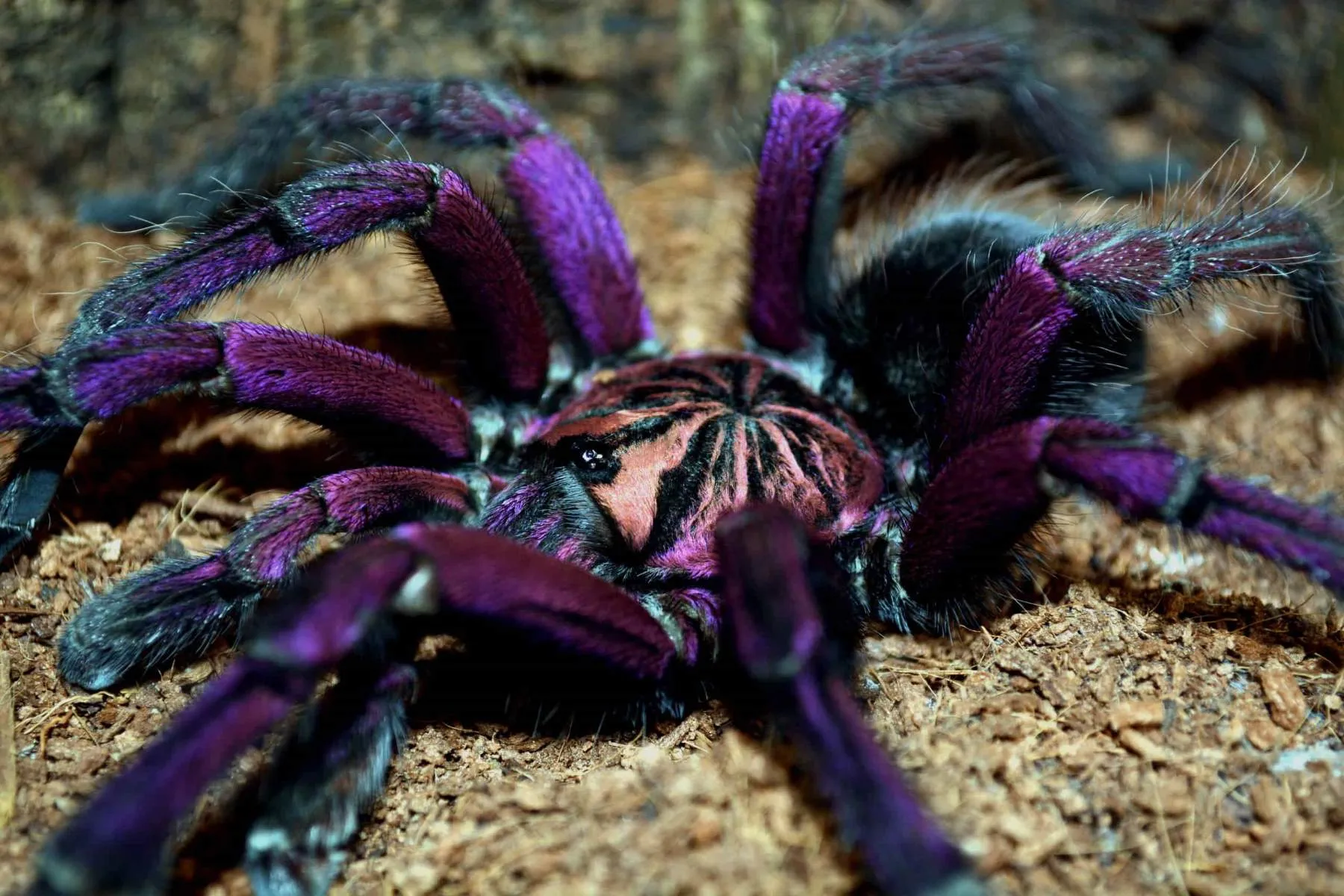
Providing fresh water is essential for hydration and overall health. Tarantulas do not drink in the same way mammals do, but they still require access to water. They absorb moisture through their exoskeleton. Clean water should always be available, and it’s important to provide water without posing a drowning risk.
Water Bowl
Provide a shallow water dish that is easily accessible. Ensure the water dish is stable and does not tip over easily. A bottle cap or a small, shallow dish is ideal for smaller tarantulas. For larger tarantulas, a slightly larger dish that they can easily drink from is needed. Clean the water dish regularly to prevent the growth of bacteria and mold. The use of a water gel can also be helpful in maintaining hydration. Water should always be available.
Misting
In addition to a water dish, misting the enclosure is important for maintaining the necessary humidity levels. Use a spray bottle filled with dechlorinated water to mist the enclosure. Misting should be done 1-2 times a week, depending on the humidity levels in your home and the substrate. Avoid over-misting, as this can lead to mold and bacteria growth, which is harmful to your tarantula. Ensure that there is adequate ventilation.
Handling and Interaction
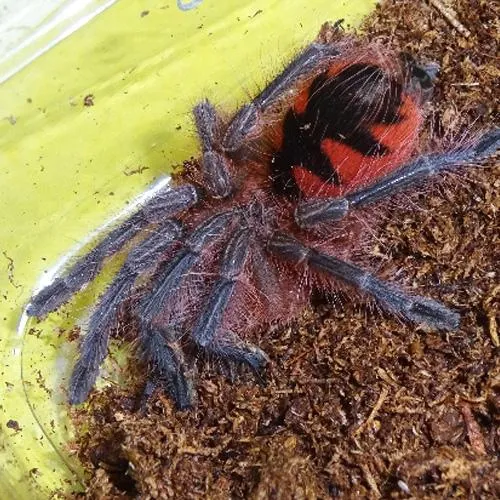
Tarantulas are not generally considered pets that enjoy being handled. Handling a Purple Bloom Tarantula is not recommended, as it can cause stress to the tarantula and potentially lead to bites. It’s best to admire your tarantula from a distance, observing its behaviors and enjoying its presence without direct interaction. Understanding their natural behaviors is vital for responsible care.
Handling Safety
If handling is absolutely necessary, do so with extreme caution. Avoid any sudden movements. If the tarantula shows signs of stress, such as raising its front legs or flicking hairs, put it back into its enclosure immediately. Always wash your hands thoroughly before and after handling. While their venom is not considered lethal to humans, their bites can be painful and cause localized swelling. Always prioritize the tarantula’s safety and well-being.
Observing your Tarantula
One of the most rewarding aspects of keeping a Purple Bloom Tarantula is observing its behavior. Take the time to watch your tarantula interact with its environment, feed, and create its burrow. This is an excellent way to understand their personality. Regular observation can help you identify any changes in behavior that might indicate a health issue or environmental problem. Observing them will enhance your overall experience as a tarantula keeper.
Common Health Issues and Solutions
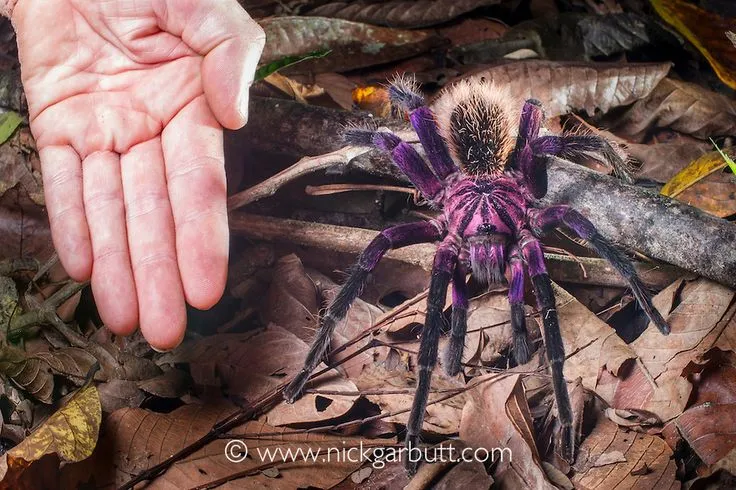
Like all pets, Purple Bloom Tarantulas can encounter health issues. Understanding the common problems and their solutions can help you provide the best care possible. Early detection and appropriate treatment are crucial for maintaining their well-being. The following will outline common problems and how to address them.
Molting
Molting is a natural process where tarantulas shed their exoskeleton to grow. During this process, the tarantula will typically stop eating, and may lie on its back. It is crucial to leave the tarantula undisturbed during this process, as it is very vulnerable. After molting, do not feed the tarantula for a week or so, as their fangs will harden during this time. Provide a moist environment to ease this process.
Parasites and Diseases
Tarantulas can be susceptible to mites and fungal infections. Mites can often be identified as tiny, moving specks on the tarantula or in the enclosure. These can be treated with specific mite treatments, or by cleaning the enclosure. Fungal infections can result from excessive humidity or poor ventilation. Ensure that your tarantula’s enclosure is well-ventilated, and maintain appropriate humidity levels. If you notice any signs of illness, consult with a veterinarian who specializes in exotic animals. Early intervention is key to addressing these health issues.
Purple Bloom Tarantula Care Breeding
Breeding Purple Bloom Tarantulas can be a rewarding experience for experienced keepers. It requires careful preparation, observation, and dedication. Knowing the breeding process helps you understand the tarantulas better and contributes to species conservation. While not necessary for every keeper, it is fascinating to learn how to help them reproduce.
Breeding Process
Breeding tarantulas involves several stages. Before breeding, ensure that the female is well-fed and healthy. Introduce the male tarantula to the female’s enclosure. If the female is receptive, they will mate. After mating, separate the male from the female. The female will then lay eggs in an egg sac. The process requires patience and awareness of the tarantulas’ behaviors.
Egg Sac Care
The female will create an egg sac, which contains the eggs. The keeper must then provide ideal conditions for the egg sac, and also watch for any signs of distress. The egg sac should be carefully monitored and kept at the correct temperature and humidity. If the female does not care for the egg sac properly, you may need to remove it and incubate the eggs artificially. This part of the process requires the most experience. After the spiderlings hatch, they need their own special care to thrive.
Caring for a Purple Bloom Tarantula is a rewarding experience that requires dedication and understanding. By following these 7 amazing tips, you can ensure that your tarantula thrives in captivity. Always prioritize the tarantula’s well-being and enjoy the beauty and fascination of this unique species. Regular observation and attention to their specific needs will lead to a healthy and happy pet.
